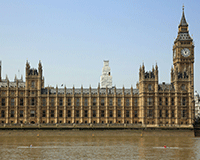
The government wants to devolve power to a combined unitary authority comprising Cambridgeshire, Norfolk, Suffolk and Peterborough councils. But these four entities have their own ideas about who should combine with who
Cambridge is among the fastest-growing local economies outside London. It is a microclimate market whose house prices rival the capital’s. On the other side of East Anglia, the economy looks very different, with few developers giving much thought to its remote eastern coast.
Yet the government announced in the March Budget that this vast and diverse area – Cambridgeshire, Norfolk and Suffolk county councils, their 19 districts and unitary Peterborough City Council – should form a combined authority for a devolution deal (see box).
Cue outrage. Cambridge City Council flatly refused to join, and within a week Cambridgeshire County Council reversed its position and opposed the offer, as later did Peterborough City Council – though both will consult further on it while pressing for a devolution deal covering just Cambridgeshire and Peterborough.
Doubt now surrounds the proposed devolution deal, which would see £30m a year invested over 30 years, alongside devolved powers, which may baffle those who are not connoisseurs of East Anglian politics.
This is perhaps what happens when the government asks localities for devolution proposals but then imposes boundaries.
Last year, Suffolk councils amicably developed a devolution bid. Ministers told them to add Norfolk.
Cambridgeshire and Peterborough meanwhile worked up a devolution bid based on their combined economic strengths.
On a February visit to Cambridge, communities secretary Greg Clark and Tory devolution guru Lord Heseltine told both pairs of councils that their bids were too small, and that all four must collaborate to win government acceptance. The Budget appeared to show that a four-way deal had been reached. But had it?
Cambridge city’s Labour leader Lewis Herbert says: “There is not enough in the proposal that will benefit the Cambridge economy, which is the opinion of our business partners too. It is an attempt to bolt on Cambridgeshire and Peterborough to an existing bid for Norfolk and Suffolk. My aim will be to get two parallel deals.”
Herbert says the sticking point is that demand for affordable housing in Cambridge is growing so fast that it cannot be met if the new money promised in the deal is spread across East Anglia.
He notes Cambridge has seen “a significant and rapid rise in sale prices and has a broken rental market in which people on medium, never mind low, incomes cannot buy”. The city cannot meet demand, despite building 1,300 homes a year.
Cambridgeshire’s Conservative leader, Steve Count, signed the devolution agreement but lacks majority control, and his council then objected to the deal’s creation of an elected mayoralty, its proposed geography and the amount of resources offered to resolve Cambridgeshire’s housing and infrastructure problems.
Count says he signed to allow further consultation on the deal as “not signing would have meant I had taken a decision to turn down a £1bn investment in East Anglia on my shoulders alone”.
He adds: “The motion that voted down the proposal ‘in its current form’ could be interpreted in various ways, everything from crossing the ‘t’s and dotting the ‘i’s, right down to shredding the document and putting it in a bin.”
Peterborough raised similar objections.
Suffolk County Council’s Tory leader Colin Noble, however, backs the idea of devolution to a “big” East Anglia and remains positive.
“There is a golden triangle of Norwich, Cambridge and Ipswich, with bioscience in Cambridge, agricultural sciences in Norwich and a lot of telecoms and technology round Ipswich, so everyone brings something to the party,” he says.
“There will be further meetings through to June when I hope all the councillors involved will have read and understood what is proposed, and I think they will come on board, including Cambridge.”
By 2020, councils will draw much of their finance from locally raised business rates and Noble thinks this will change the relationship between councils and businesses to one that will encourage the combined authority to use its powers to help investment.
“We will be a partner for business and have a greater interest in its success than before,” he says.
“Whether it’s sheds, business parks or whatever business wants to build, I think we should just zone the land and get out of the way.
“We know the places and we know the infrastructure needed better than central government does and we could use our powers to get that delivered.”
John Fuller, Conservative leader of South Norfolk Council, thinks the “big” East Anglia is the right scale for devolution since the population and GDP there is about the same as Greater Manchester.
He says most of the region has pressures for new homes “and they are going to get built one way or another. The combined authority gives us the opportunity to ensure the infrastructure is there to reflect the rate of growth.”
He adds: “I think this is a once-in-a-lifetime deal, though some people may want to look gift horses in the mouth.”
Property firms, however, are bemused by both the councils’ disputes and the deal’s content.
Chris Goldsmith, director of Cambridge-based Turnstone Estates, says: “The amount of money on offer is really a bit pitiful. I mean £30m a year buys you a couple of miles of motorway.
“Cambridge is fast growing and there will be a ripple effect across the region. But to get that, you have to make sure Cambridge can grow and I think this devolution deal means that ripple effect could lose impact as people look right across the region.”
Meanwhile, James Allen, senior partner at Roche in Norwich, thinks devolution could make a difference in meeting infrastructure needs, which he feels include better rail services, improved broadband to serve the important agribusiness industry, and upgrades to the A12 and A47 roads, which serve Great Yarmouth and Lowestoft’s growing offshore renewable energy industry.
“I think it is appealing that Norfolk and Suffolk are in a devolution deal with Cambridgeshire,” Allen says.
“Norfolk and Suffolk alone seems light compared with more substantial devolution deals being done elsewhere. I don’t think an elected mayor is needed for the area, though. It would just be another layer of local government.”
Some think the geography is less important than the freedom the combined authority could gain to finance infrastructure upfront, possibly by reinvesting the proceeds of future economic growth.
David Henry, who heads Savills’ Cambridge planning team, says: “There is a large bill to be met for infrastructure, including homes, and central government finds that difficult to meet.”
Henry believes the combined authority needs a “rapid reaction fund” of capital available that can put in infrastructure and be repaid from local taxes or community infrastructure levies once development flows.
“Infrastructure can be transport, utilities and IT, and at the moment suppliers have little incentive to put that in ahead of development since they cannot see a way to get paid,” he says.
By June all the councils involved should reach their final decisions and the vast flatlands of East Anglia might have none, one or two combined authorities.
East Anglia devolution deal highlights
- new investment of £30m a year for 30 years
- a devolved local transport budget and responsibility for the strategic route network
- powers over strategic planning and housing, including £175m for new homes
- power to devise a spatial planning framework for East Anglia
- a board to source surplus public land for development
Population
Both sides can deploy the population argument to justify their preferred combined authority. This puts the “big” East Anglia combined authority at 2.4m, not much smaller than Greater Manchester at 2.6m. The Cambridgeshire and Peterborough options muster 829,000, far smaller, but still larger than Tees Valley, which at 666,200 people has combined authority status.
Peterborough: 190,400
Norfolk: 877,700
Suffolk: 738,510
Cambridgeshire: 639,800











